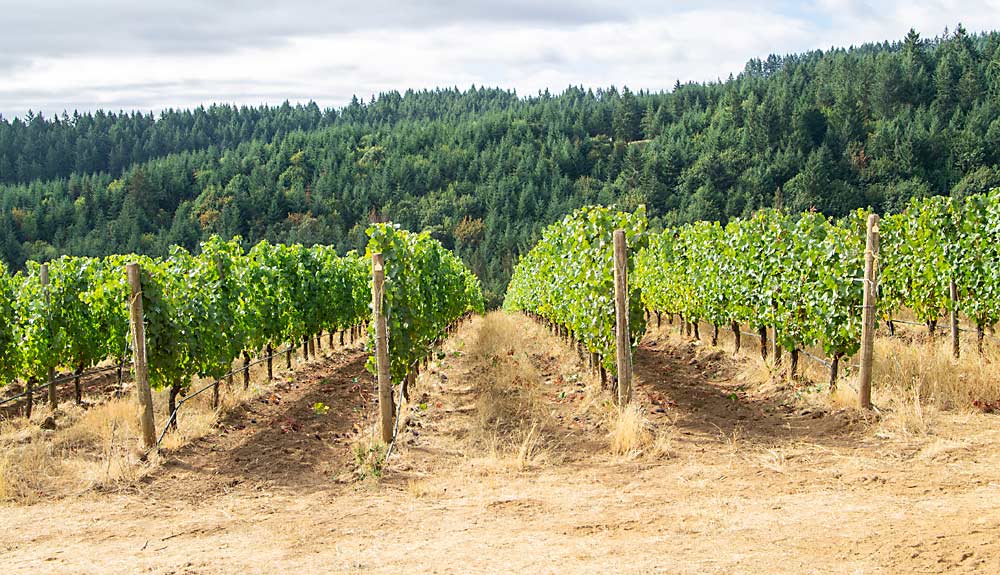
Certified sustainable wineries commit to well-accepted principles of environmental stewardship, but in practice it’s not so easy to define the steps to sustainable viticulture and enology.
“Some people are calling some things sustainable when, in reality, they may have consequences that aren’t actually sustainable,” said Kelli Gregory, vineyard manager for Adelsheim in Oregon’s northern Willamette Valley. “Every decision you make is going to have a consequence — or multiple consequences — downstream.”
Gregory manages 175 acres of grapevines across six estate vineyards in the Chehalem Mountains. It’s an American Viticultural Area known for premium Pinot Noir production, with a climate and mix of basaltic, ocean sedimentary and loess soils that produces big canopies. She sees sustainability as a connected system rather than a series of independent steps.
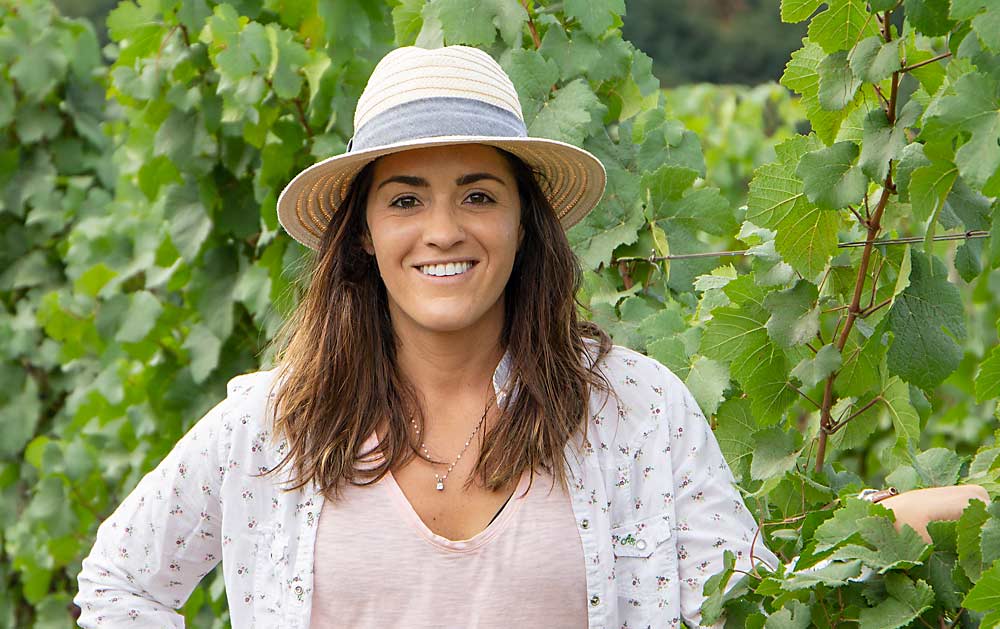
Sustainability in action
Since founder David Adelsheim first planted grapes in 1971, the company’s approach to winemaking has consistently focused on environmental, social and organizational responsibility. Under Adelsheim’s leadership, the winery was the first in Oregon to become LIVE — Low Input Viticulture and Enology — certified, and by 2008 all of Adelsheim’s estate vineyards were also certified.
“Adelsheim’s commitment to sustainable practices in their vineyards and wineries exemplify the mission of LIVE and the values shared by LIVE’s membership throughout the Pacific Northwest,” said Brighid O’Keane, outreach director for LIVE.
That tradition continues with Gregory, who earned a master’s degree in viticulture from Oregon State University and received the LIVE Excellence in Sustainability award in 2019. In 2021, she was invited to share the company’s approach during the U.S. Sustainable Winegrowing Summit, a virtual event organized by industry groups from California, New York, Oregon and Washington.
Today, one of Adelsheim’s most impactful — and visible — commitments to sustainable agriculture is to farm without herbicides, she said.
“It’s a constant battle that you’re going to have every season, because you’re living the challenges of trying to farm without one of the most effective tools at managing weeds,” Gregory said.
The company went herbicide-free in 2017 and found they had a steep learning curve and big sticker shock to accept.
“We had to invest in the machinery to do mechanical weed cultivation, and we had to do crazy things that we never even thought about — like the wires,” she said. Before the cultivator made its first pass, crews added nails to every wood post so they could keep the catch wires and irrigation tubing out of the machinery’s path.
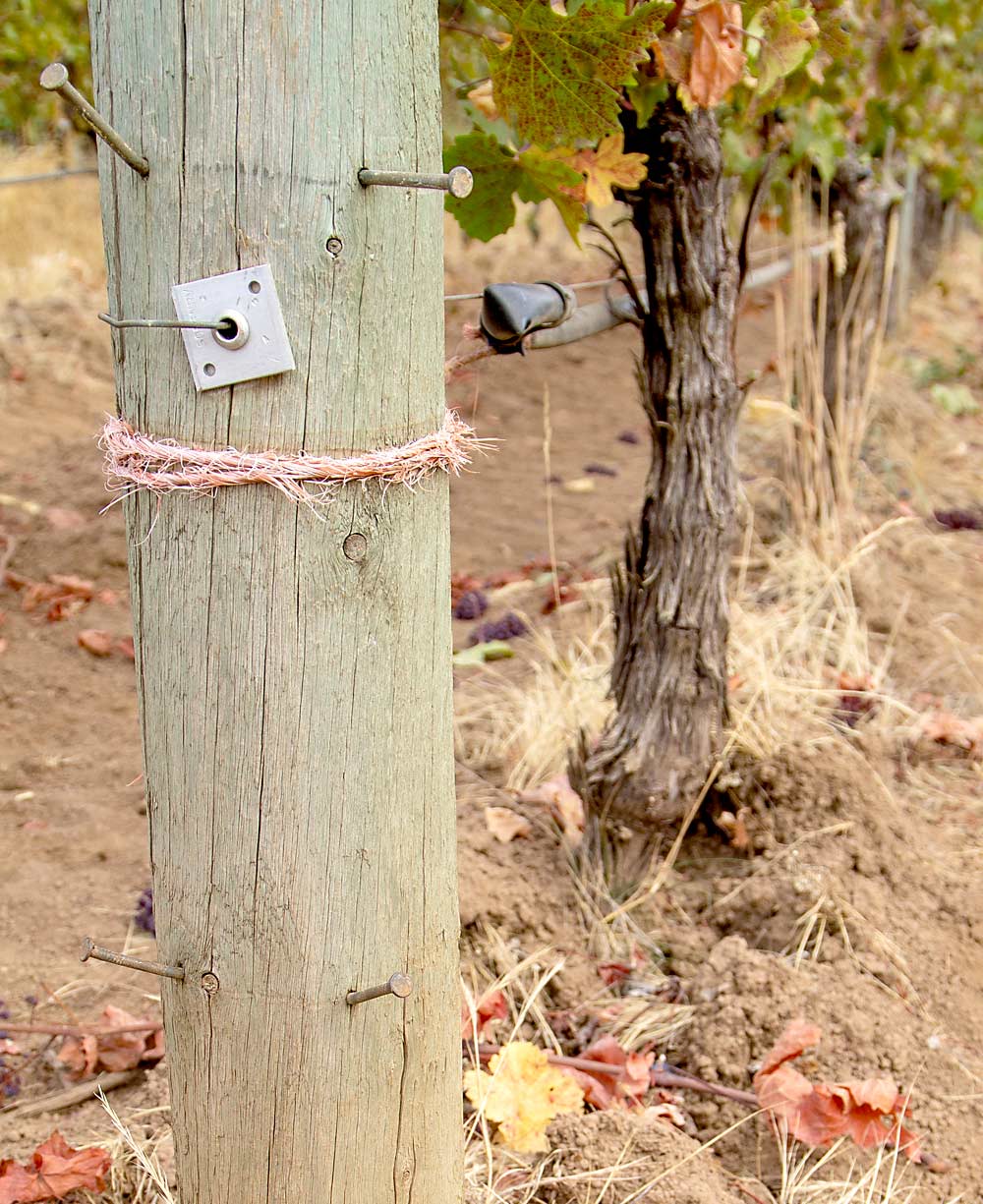
At their Laurel Leaf Vineyard in Hillsboro, planted with Pinot Noir, Gregory manages the vineyard with alternating rows of permanent grass and clean cultivated soil. After harvest, the cultivated rows are seeded with a custom cover crop blend that grows through the winter, helping to control erosion in the rainy season. The cover crop is mulched into the soil the following spring, providing nutrients for the vines in the growing season.
“For the soils we’re working with, this 50 percent is really a good combination of competition and not competition that allows us to have a balanced vineyard,” she said.
The grassy rows allow them to do tractor work with fewer passes through the vineyard, often with multiple implements at one time, reducing diesel use and soil compaction.
Of course, different vineyards require different management decisions, and sometimes they adjust their approach block by block.
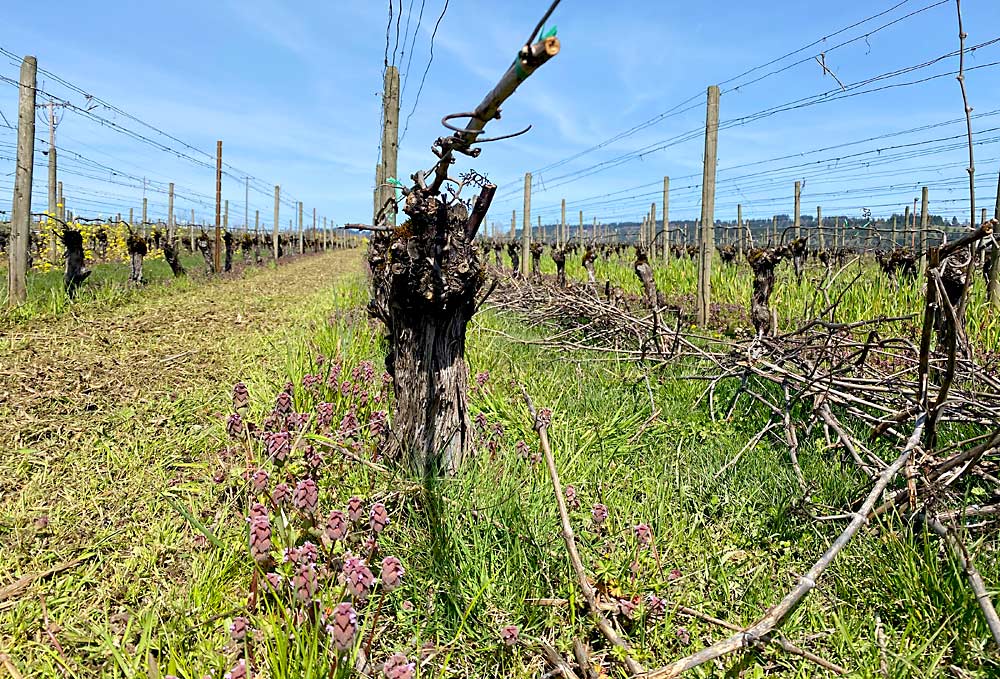
“In a few places where we have really deep soil and plenty of nutrition and vigor in the vines, we have tried going full-cover and no-till,” she said. “That would have been a lot easier back in the days when we had more rainfall.”
This year the area experienced two record-breaking heat events on top of serious winter drought, and the no-till approach created too much competition and too much stress on the vines, she said.
“Even though no-till is being called a sustainable practice, if it’s not the right practice for that site and it causes you to have to do more things — and I’m having to fertilize more and irrigate more and doing all this stuff that’s requiring me to basically compensate for what I did — I don’t find that sustainable,” she said.
By far, Gregory said the biggest challenge they face while farming without herbicides is with their baby vines. In the establishment years, crews clear weeds by hand. “Once the vines are producing, we can come in with the mechanical cultivator,” she said. “Until then, it’s pretty painful on the balance sheet.”
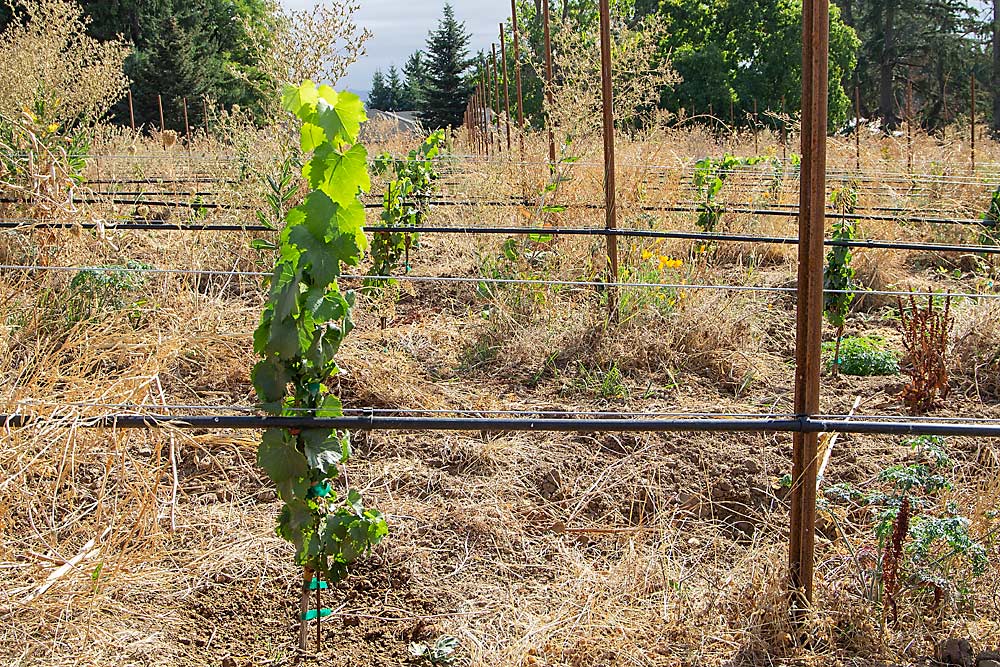
Beyond the vines
Along with the vineyards, Gregory manages another 200 acres of unfarmed land on Adelsheim properties, and in her view, it’s all tied together.
“I’m looking at all the areas and trying to create this really robust, diverse system surrounding the grapevines,” she said, “because I believe they all are connected.”
Alleyways between blocks are planted with grasses to improve soil health. Fallow areas are seeded to create habitat for beneficial insects.
“We call them flower islands, and we try to connect one area to the next so that they don’t have to go too far before they can find their next habitat,” she said. “We try to think about that with trees, too, for hawks and predatory birds that can help control our rodent populations.”
Bird boxes dot the landscape. Walking trails provide opportunities for employees to relax or move from one area of the vineyard to another.
In a former block that struggled to produce quality fruit, they built a cut flower and vegetable garden that supplies all the flowers for their tasting room in Newberg, eliminating the cost and environmental impact of purchasing flowers from a store.
Gregory introduced the company’s compost program in 2017. After crush, the grape pomace is layered with organic matter from the vineyard’s landscaping and gardens. They add organic manure from neighboring farms and are introducing earthworms to the mix.
Each fall, they add their compost to the vineyards, concentrating on areas where blocks have historically struggled with shallow soil. “We’ve brought these blocks completely out of that funk,” she said.
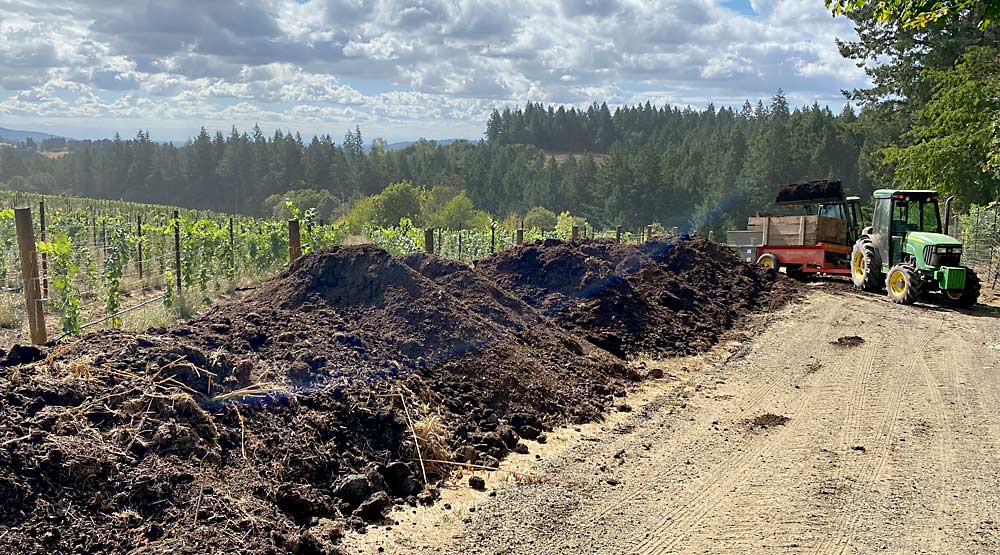
Aside from the extra effort required to farm sustainably, Gregory said the approach requires a passion for the philosophy and support from the company’s management team.
“A lot of these ‘sustainable’ action items unfortunately are more labor intensive and more expensive because it can be harder to do these things in today’s modern agriculture,” Gregory said. “But we aren’t just about cost; we’re also about people and happiness and quality of life and the environment.”
Looking ahead, Gregory said they’re investigating the feasibility of adding animals to the system.
“If you go half-in on this stuff, it’s better than nothing, but you quickly become aware of why the old way of farming used to work,” she said. “Every farm you saw had livestock on it. They were using everything from the animals they could, and they were using the animals as tools themselves — to manage vegetation, for manure, for compost. They had this balance, and everything was this dynamic, complex system.” •
—by Jonelle Mejica






Leave A Comment